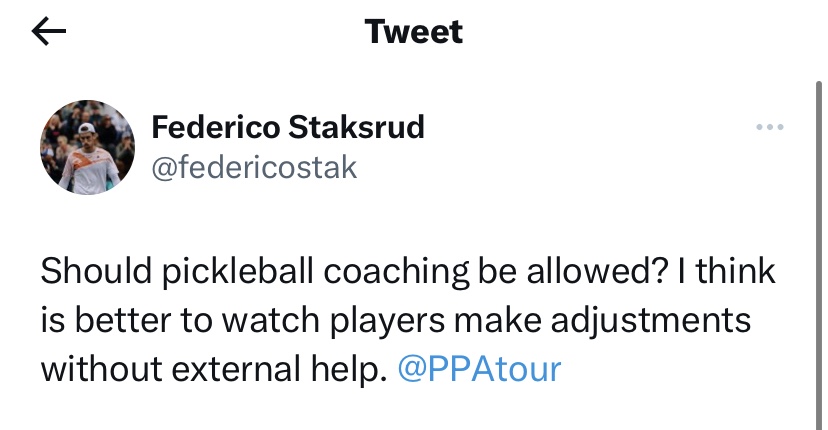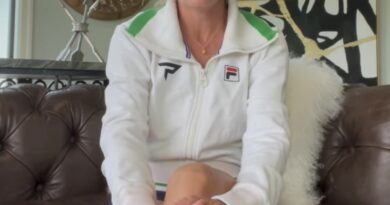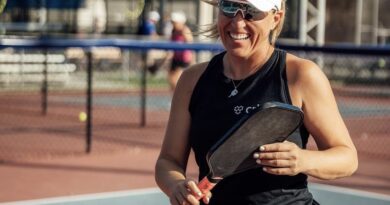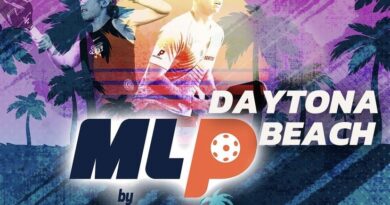NML Newsletter Compilation – March 3rd

We got this up a little later this week. We’ll typically aim for posting the newsletter stuff by Monday morning, but that’s why you need to subscribe! We’ll have another one for you on Friday. In the meantime, for those who did not see it, are not subscribed or just want to read it again, here is the March 3rd edition of the NML Newsletter.
Challenger Shuffle Draft Preview

It is confusing to us that MLP is not trying to make a bigger deal of the Shuffle Draft. Since they announced the opening of the Shuffle Draft application period, there has been nothing further on social media about the event. Additionally, the very tight timeframe without a publicly available player pool gives no opportunity for fans to get involved and start dissecting the options available to teams on their own.
We have a short window with the Challenger Shuffle Draft. The player pool applications closed on February 28th and the available player pool was sent to owners on March 1st. With the order of the draft determined by the reverse order of the Mesa standings, teams only have a couple of days to consider what they want to. We posted an article with a team-by-team breakdown yesterday without the knowledge of the player pool as that has not been made publicly available. The Shuffle Draft selections will be released to the public on March 5th.
One of the best aspects of MLP is the draft and waiver wire transactions, which is 100% unique to individual sports. Free agency and the draft is what drives the 365 day cycle that now propels the NFL and NBA. It is great for talking heads on podcasts, radio, TV etc. and is exactly what generates the now mostly obsolete water cooler talk. With the ongoing caveat that MLP is still fine-tuning lots of things in these early stages, it would seem that moving the application date up a week to allow for a pre-Shuffle Draft release of the player pool could be beneficial for generating more MLP buzz.
Note: We posted our Challenger Shuffle Draft reactions on Monday evening.
Meaningless Backdraws

The loser’s draw/backdraw/consolation/opportunity bracket, whatever you want to call it, has been diminished by the PPA. We questioned what the PPA is doing after the Arizona Grand Slamwith some understanding why they have done this but, from our perspective, it is a loss. Although it may not be a loss from the standpoint of pro pickleball as a product, there’s just something about that grind of the backdraw that is appealing from a hardcore followers perspective.
The difficulty with the new structure of the backdraw, with the most incentive for almost all teams is a 5th place finish, is that it is very hard to take anything away from those results. Games to 15 are weird and we have always had to take them with a grain of salt. Nevertheless, they formed an important part of a player’s resume. That is hardly the case anymore.
Rafa Hewett/Christian Alshon won 5 matches in the backdraw on Saturday in Minnesota and ended up in 5th place. They beat some good teams including AJ Koller/Dekel Bar, Julian Arnold/Rob Nunnery and Tyler Loong/Todd Fought. Still, it’s hard to know what to make of that 5th place finish for Alshon/Hewett. It used to be that beating teams in the backdraw meant something, depending on who you were playing. A win over AJ/Dekel would have been something noteworthy.
What we have seen in 2023 is that the better teams that fall short of Championship Sunday aspirations are really struggling for any motivation in either the 5th place backdraw or even the bronze medal match. You don’t need to look very far to find prime examples of this beyond the AJ/Dekel loss to Alshon/Hewett. Yana Grechkina/Etta Wright smoked Koop/Bright 2 and 7 in the bronze women’s doubles match while Frazier/Smith took down Bright Newman 8 and 7 in the mixed bronze match. The Koop/Bright loss, in particular, was clearly the result of a broken motivator for the pair.
There’s a lot of broken motivators for the better teams in the backdraw and understandably so. What that means is less of a sample size to evaluate players. Main draw results are limited and the backdraw used to be a major extension of a player’s resume – more so when there was a true double elimination. Beyond Ben Johns, most of the top players would grind a backdraw for that possibility of a gold medal. Even that bronze medal gave some reason for teams to push hard in the doubles backdraws.
The diminishment of the backdraw has resulted in the unintended loss of a larger sample size for player evaluation. Backdraws are not something that we cannot pay attention to because of what it might say about a player to push through a meaningless backdraw. However, any meaning that can be gathered from backdraw results is murkier than ever.
To Coach or Not to Coach?

It is sometimes hard to tell what is driving a lot of social media posts from pickleball players. More and more pros these days have people around them assisting them with things like social media and it’s evident that many of the posts are either done or facilitated by someone helping with their media manager, especially when it comes to video content. Regardless of whether this tweet was spurred by a social media manager or Federico Staksrud himself, a tweet from Fed piqued our interest on Sunday as he tweeted: “Should pickleball coaching be allowed? I think is better to watch players make adjustments without external help. @PPAtour”
It raises an interesting question about coaching as the sport of pickleball grows. On tour, coaching is only allowed during timeouts and in between games. At MLP, there are zero restrictions on coaching. What’s the best approach? Most players don’t have coaches. Anna Leigh Waters has her mom, Leigh, when she plays singles. Catherine Parenteau has her fiancée and manager, Athene Trouillot. Matt Wright is there for Lucy Kovalova when she’s playing doubles and he is not playing. We also see more players these days on their phones during timeouts and we have to think some of those players are getting advice in some capacity. However, unlike in pro tennis, there isn’t a single player on tour we are aware of that has a paid coach who travels with them to tournaments. A few players are starting to bring trainers along.
There is nothing holding players back from having coaches right now. It just isn’t financially viable for most of them and, even if it was, there are probably a very limited number of people out there that players would trust to coach them. The coaching part is slowly coming to the game as we saw a few of these MLP owners in Mesa hire coaches for their teams. The sport as a whole is becoming more professional and coaching is going to come, and when that comes the question will have to be answered as to how much in-game coaching should be allowed.
In tennis, there is no coaching allowed during matches and, in an era of sports that is driven by analytics and film study, there is something appealing and nostalgic about having players figure things out during a match on their own without intervention. However, pickleball does not have to be tennis. In a team style format like MLP, it makes a lot of sense to avoid trying to police coaching in an atmosphere that should be promoting team collaboration. For tournaments, though, why does anything have to change from the way it is now?
The fact is that no matter how smart someone is, having a smart person that giving an outsider’s perspective is going to be helpful. Individual players can get lost in an echo chamber and sober second thought is needed for anyone who really wants to grow their game. There is a reason every single sport has coaches and players are not left to their own devices to sort things out.
Going back to last week’s newsletter, we still think it is a real thought to do away with one or even both timeouts during games. Whether you are keeping timeouts or not, limiting coaching to timeouts and between games straddles the middle ground between players figuring it out for themselves and allowing an outside voice to have some impact on the game the way most other sports do. The only weird thing is that policing coaching in a pickleball environment can be difficult, and it’s not clear whether that could become an issue as coaches become more common on the sidelines of pro players.
So, is there really any reason to change what it is right now?
Side Out vs. Rally Scoring

There is lots of ongoing debate when it comes to side vs. rally scoring. As humans who do not like change, we have been resistant to the idea of change to rally scoring. We have come around to it for MLP but have still been hesitant to fully buy-in to rally scoring for traditional tournaments.
Sticking with side out scoring crowd for pro matches becomes more difficult when Callie Smith and Lucy Kovalova are grinding out a 4-game match that takes over 2 hours! That is an incredibly long match that did not even go the distance in Minnesota last weekend and takes a toll on all 4 players. Lea Jansen then had to go play a singles match against Catherine Parenteau, who had also played a match earlier in the day.
As confusing as it is for amateurs to learn the scoring system, it’s not prohibitive to players taking up the sport by any means. Limiting the toll of pro players’ bodies and keeping pro matches within a certain time frame seem to be the best reasons to go to rally scoring. Tournaments are already such a grind with side out scoring and you can manage that better when matches are not dependent on a team scoring on their serve. If you want to ensure the best matches, play longer rally scoring matches – best 3 out of 5 or even 4 out of 7.
We’re not really sure there is anything beyond the human nature in us that wants to deny the change to rally scoring, but we are still humans. The change to rally scoring removes the inherent side out grind of pickleball. It’s not a big deal to us either way but, with all this debate happening more recently, it was noteworthy to us that a 4-game, traditional scoring match took over 2 hours to play last weekend.
Agree or disagree? Let us know in the comments below or email us at nmlpickleball@gmail.com. Follow us on Twitter, Instagram and Facebook, and also make sure you subscribe to our newsletter for fresh content!



Agree on the backdraw. Players don’t appear to be trying that hard – if they even stay in. I miss the bronze stallions whether you’d claim Dawson/Loong or Devilliers.
Coaching: Staksrud may have been spurred to post after Navratil’s podcast comments. Navratil seems to be all in for any kind of coaching. Morgan Evans was the Selkirk coach – presumably paid by Selkirk on behalf of their top players. In Tyson’s early days, Morgan was at major tournaments coaching him at every time-out. Tyson gives Morgan the credit for finally winning a singles Gold at Nationals. Adam Stone has put his services out there for hire. Some of the others: Roditi, Dayne may watch their players but it doesn’t seem to be as official as the ones you mentioned: Leigh and Athene. Even USAP has watered down the rules that used to be written so as the ref couldn’t be perceived as a coach. Now the ref can just tell players they are not in the right court, or the right server/receiver. All of that used to be considered coaching and the players would have to ask various questions. I am seeing the trend that eventually coaching will be allowed and not restricted to time-outs. I’d rather not see it but as you said humans tend not to like change. I want a team to win on their own merits, their own homework analyzing matches, and not win based on who has the most money to hire the best coach. But hey maybe NML gets hired to text the player strategic tips during a match. I can just see a watch app: ocean wave sound means crosscourt dink and tinkling bells means attack directly across.
Coaching will definitely be more of a thing. A number of these seniors are getting opportunities with MLP. Scott Crandall with the Breakers. Paul Olin with Columbus. Julio Rivera with Orlando. It is coming but will take time.
We have not been solicited for any strategic texts during matches to date!
The problem with disallowing coaching is that it then opens the door to cheating. Do you prohibit players from checking their phones during timeouts to make sure they aren’t getting coaching? What about secret signals from the stands? Allowing coaching means you don’t have to police all these things and more, and we know pro pickleball doesn’t have their resources to police much of anything right now, as we see with paddles.
Just make sure you prohibit annoying coaching – such as Leigh Waters coming onto the court between every single point.
As far rally scoring, I’d prefer it stay in MLP, where it belongs. My reasoning is that MLP with rally scoring is a unique flavor of pickleball, just like PPA style tournaments are their own flavor.
PPA-style tournaments are intended to find the best team / player. MLP is designed to be a fun atmosphere, and who wins is more a product of luck.
I enjoy having both flavors available, and if you bring rally scoring into the PPA, it will mean you only have a single flavor available.
It is very true. It depends on how much they want to police it. Tennis chooses to do it but most sports do not prohibit.
There is a question as to whether there is a difference in Rally vs. Side out in terms of upsets. It may be that there isn’t much difference even if we feel there is. The side out scoring grind is something that anyone who has been around pickleball tends to prefer.